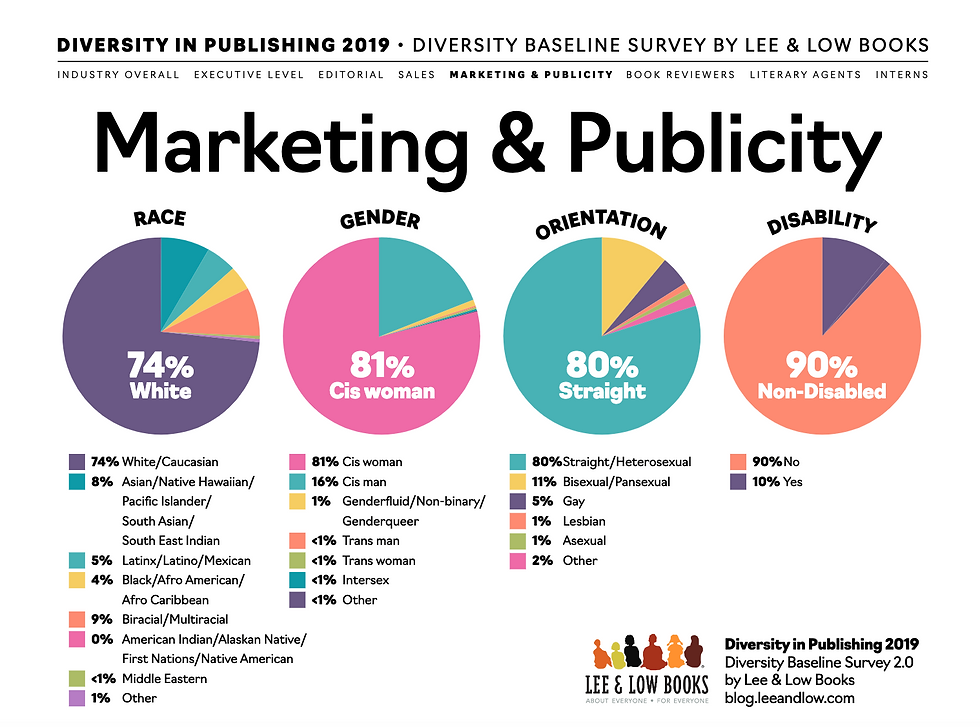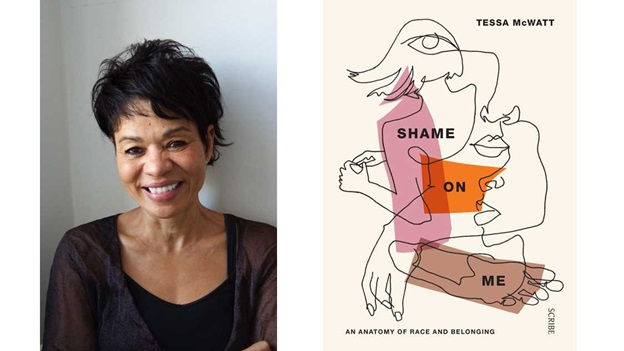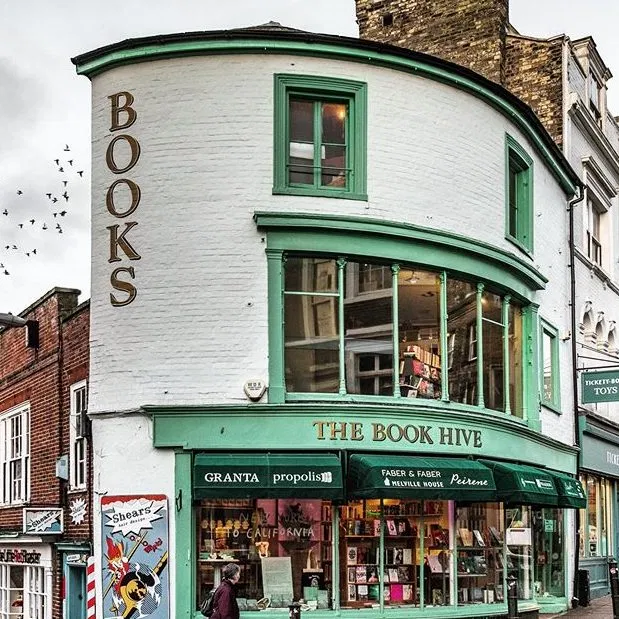Indie Bookstores are an Author's Best Friend
- Kaci Tavares

- May 19, 2020
- 8 min read
Updated: Apr 28, 2022
One of the many stereotypes about Asian people is that we’re good at math. It’s one I wish were true, but I’m here to confirm I still suck at it. My latest dalliance with numbers was a mock-up profits and loss sheet for a literary magazine I pitched called, Between the Boxes. Though I may write about Between the Boxes later, for now I’m here to look at the marketing and distribution of books by authors of color.
Part of my profits and losses sheet projected my budget for Between the Boxes’ marketing campaign. In place of that number, I put in an optimistic placeholder, and continued merrily on my way to brainstorming publicity strategies. I was very focused on what Sarah Braybooke, Scribe UK’s newly appointed editor, taught my publishing class about marketing and publicity. The main difference between the two, is that marketing, such as through print or digital ads, are tailored directly to consumers or booksellers and cost the publisher money, whereas publicity, such as through interviews, reviews, and social media, is usually free (Braybrooke, ‘Marketing & Publicity’). Easy, right? Up the publicity and limit the marketing!
As Lee & Low’s 2019 Diversity Baseline Survey reports a majority 74% of North American marketing teams identify as white, possibly it’s that simple, if the book in-question is by a white, monolingual author.

But, as we’ve established in previous posts, authors of colour’s books often need extra attention to ensure parity of standards compared their white, monolingual counterparts. What makes marketing strategies for authors of color’s books any different? Though marketing and distribution are the areas of publishing I know the least about, throughout my readings, I’ve found three ways marketing teams can maximize the success of their authors of color, while doing so respectfully.
1. Hire a Culturally Specific Marketing Director
In my posts on agents and editors, we’ve seen respectfully preparing an author of color’s text for publication is difficult, but when it comes to their marketing campaigns it’s an even more complex task. As much of a book’s publicity comes from its author giving interviews on their work, and speaking to their connections to their text, marketing teams are tasked with marketing not only an author’s text, but also the author themselves. The idea of “selling” an author doesn’t sound great on paper, but Braybrooke explains it this way: marketing a book is difficult, but marketing a person is much easier because the person – through their social media accounts, interviews, and life stories – gives audiences something tangible to latch onto and identify with (‘Publishing & Marketing’).

Braybrooke brings up a fair point. For example, for Tessa McWatt’s memoir, Shame on Me: An Anatomy on Race and Belonging, her marketing team required a straight-on author’s photo that did not obscure her face (Personal Interview). As Shame on Me uses Tessa’s own body and facial features to explore her cultural identity, the team knew readers would want to see Tessa, and if they could, the book would sell better. This marketing decision makes perfect sense, however, Tessa’s author’s photo also allows for increased scrutiny of her face, rather than focusing on what her face has to say. Many of authors of colour in the UK report that “their ethnicity was the main focus of their publisher’s publicity campaign rather than any more universal aspect of their book” (Spread the Word 8). In my last post, we saw that first-hand in “the single cover” treatment many of the Anglosphere’s covers receive. This brings us to the critical question: How do the Anglosphere’s marketing teams ensure they’re respectfully promoting their authors of color?
One option is to create a culturally specific marketing campaign. Publishing houses can go about this in two ways: either ensure a marketing director on staff is trained to do so, or, hire a consultant publicist who will focus on the book’s culturally specific publicity, while the publishing house concentrates on traditional press. Why is this important?
Kima Jones is the owner of Jack Jones Literary Arts, a book publicity company that specializes in culturally specific marketing. (Visit their site: here!) She argues that marketing authors of color is not as easy as contacting the nearest cultural agency (qtd. by Ho, “Diversity”), and as her company boasts a 98% clientele of women writers of color, she’s the expert. Just because a text is written by a Chinese-American author, does not mean all audiences who identify as Chinese will want to pick it up. And, self-identifying as a person of color “doesn’t automatically render a publicist culturally competent in promoting books by diverse writers” (Jones qtd. by Ho, “Diversity”).
The job requires in-depth conversations with the author to figure out who they want their book to reach, and specific research and strategies to ensure those communities are reached in the right way. Just as Braybrooke points out that successful marketing must be done within the country a book is being sold, due to the cultural cues, languages, and mores of that country (“Marketing & Publicity”), the same attention must be applied to specific communities within an author of color’s audience. Jones’s specialized marketing strategies tailored to communities of color, and her connections to reviewers, and culturally-specific literary organizations and publications, allow her to ensure her clients’ books are read by the right people, at the right time.
While it is essential to reach a minority author’s cultural audiences, it is unwise to ignore the universal aspects of their texts when marketing. After all, the most successful authors will be those who hone into both their locality and universality (Braybrooke, “Marketing & Publicity”). In order to ensure authors of color reach their every potential reader, culturally specific publicists like Jones can make sure an author is portrayed respectfully and locally to communities of color they identify with, while the house can focus on what is universal and relatable about that author’s unique experience. It follows that you also need reviewers who can speak to both locality and universality. This brings us to the next suggestion: consider your book reviewers.
2. Choose Relevant Reviewers
Part of a successful marketing campaign is sending advance proofs to reviewers who, will hopefully write quote-worthy reviews that can be placed on covers, or advance information sheets that help booksellers consider which books to stock. Marketing teams for authors of color need to ensure they’re reaching out to reviewers who can speak to the author’s culturally specific readership, and their general one. During this process, marketing teams might ask themselves: Are my reviewers representative of the readership my author wants to reach? Will they be able to engage with the cultural or linguistic aspects of the text, and pick up on essential cultural cues? Are the reviewers from the same educational background?

In a 2011 New York Times study, they found that 90% of books reviewed in the Anglosphere are those by white authors (qtd. by Govinnage, 'I read books').
And, as a whopping 80% of book reviewers in North America self-identify as white (Lee & Low, ‘Diversity Baseline Survey’), the questions above become particularly important to ask, and highlight the necessity of publicists like Jones who can help their authors of color’s books reach the relevant desks within the remaining 20%.
My last question above regarding the educational background of reviewers might come as a surprise, but a 2018 study conducted by Postcolonial Writers Make Worlds found that reading contexts affects what aspects of texts resonate with readers. The study asked two reading groups—one comprised of “non-professional,” pleasure readers, and the other of academics from the University of Oxford—to read three contemporary books by Black British authors: Aminatta Forna’s The Memory of Love (2010), Nadia Mohamed’s Black Mamba Boy (2010), and Kamila Shamsie’s A God in Every Stone (2014).
Source: Amazon.co.uk & Goodreads
The study found that “though black and Asian British writing is often marked as exotic or different… readers of all ages [and colors] were able energetically to put those imposed meanings to one side” (Boehmer & Lombard 116). The readers who connected most with the universal aspects of texts and “locat[ed] experiences related to their own in very different contexts” were the so-called “non-professional,” pleasure readers (Boehmer & Lombard 116). The academic readers, though understandably more critical of the texts, were also warier of trusting their perspectives, and did not allow themselves to personally identify with them as much (Boehmer & Lombard 116-7). What we learn from this study is that though receiving a review from my neighbour John Doe is not as prestigious as one from critically-acclaimed poet Kaveh Akbar, when considering who to ask to review books, do not neglect your everyday reader.
Like with “the single cover” trope we even see in the covers above, some author of color’s publicity campaigns focus too heavily on their ethnicity, and do so in the wrong way. It is important to highlight a book’s universality to help deconstruct that perceived “Otherness” and normalize books by authors of color in the canon. There is, after all, more that connects us than divides us, and possibly reviews from these everyday readers can help us to see that.
3. Utilize Your Independent Bookstores
Part of a marketing team’s job is to pitch books to booksellers. Though distributing texts through big-name booksellers like Waterstones, Barnes & Noble, or Amazon is definitely necessary for both accessibility and publicity, Jones argues that marketing teams too often neglect utilizing their local bookstores for author of color campaigns. “The independent bookstore is by far our best friend… it’s about getting the book to the bookseller, [and] putting it on the staff recommend shelf,” Jones argues (qtd. by Ho, “Diversity”).

Whereas Waterstones might focus too heavily on a text’s otherness and categorize books by authors of color in distinct sections of the bookstore, small, independent booksellers do not need to follow such segregating rules. Take Norwich’s The Book Hive, for example. Part of The Book Hive’s ethos is to stock books that both reflect the diversity of its customers, and encourage customers to read diverse texts (Hedinger, Personal Interview). By refusing to categorize its books on the bookshop’s shelves, this ethos is reflected in The Book Hive’s display practices. Readers shopping in store are not allowed to immediately gravitate to sections or genres they identify with, and might give another book a chance.

Like The Book Hive, many indie bookstores collate unique stock that will appeal to a specific market of patrons. In doing so, they become physical spaces where literary communities feel safe to gather and develop. One example of such a place is Eso Won Books in Los Angeles, California. Co-owned by Tom Hamilton and James Fulgate, Eso Won books has been stocking texts primarily by African-American authors for thirty-plus years, Eso Won Books hosted President Barack Obama’s first book-signing in 1995 to an audience of ten people, five of whom worked at the store (Ho, “Diversity”). They welcomed him back for his second book signing in 2006 to a crowd of a thousand fans (Ho, “Diversity”). President Obama’s story just goes to show that unlike Waterstones or Barnes & Noble, independent bookstores are willing to support their new, minority authors at all stages of their career. Needless to say, publicists for culturally specific marketing campaigns should not neglect their indie bookstores, and consumers should consider paying a little extra to support them, knowing that they are often ensuring essential communities can continue to thrive.
Though this post only discusses a few ideas based off of what I read, already I see the careful mitigation that must come when marketing authors of colors and their texts. In today’s world, unfortunately the words “authentic” and “exotic” have become interchangeable, and it is a delicate dance to not ignore an author’s ethnicity, while also ensuring it does not become a text’s only selling point.
Thanks for reading—next time I’ll be talking more about a particularly relevant topic: the power of you, the consumer!
Stay safe and healthy,
Kaci
Works Cited:
Boehmer, Elleke & Lombard, Erica. “Publishing, the Curriculum and Black British Writing Today.” Wasafiri, vol. 34, no. 4, 2019, pp.115-121. Scopus, doi: 10.1080/02690055.2019.1635836.
Braybrooke, Sarah. “Marketing & Publicity.” Publishing: A Practical Approach, College of Literature, Drama, and Creative Writing, 10 Feb. 2020, University of East Anglia Campus, Norwich, UK. Lecture.
Govinnage, Sunili. "I read books by only minority authors for a year. It showed me just how white our reading world is." Washington Post, 24 Apr. 2015. washingtonpost.com/gdpr-consent/?next_url=https%3a%2f%2fwww.washingtonpost.com%2fposteverything%2fwp%2f2015%2f04%2f24%2fi-only-read-books-by-minority-authors-for-a-year-it-showed-me-just-how-white-our-reading-world-is%2f. Accessed 18 May 2020.
Hedinger, Joe. Personal Interview. 27 Apr. 2020.
Ho, Jean. “Diversity in Book publishing Isn’t Just About Writers—Marketing Matters, Too.” Code Switch: Race and Identity, Remixed, 9 Aug. 2016, npr.org/sections/codeswitch/2016/08/09/483875698/diversity-in-book-publishing-isnt-just-about-writers-marketing-matters-too?t=1584319992973. Accessed 18 May 2020.
Lee & Low Books. “Where is the diversity in publishing? The 2019 Diversity Baseline Survey Results.” The Open Book Blog, 28 Jan. 2020, blog.leeandlow.com/2020/01/28/2019diversitybaselinesurvey/. Accessed 18 May 2020.
McWatt, Tessa. Personal Interview. 27 Feb. 2020.
Spread the Word. Writing the Future: Black and Asian Writers and Publishers in the UK Market Place, edited by Danuta Kean. Spread the Word.org.uk, 2015.










Comments